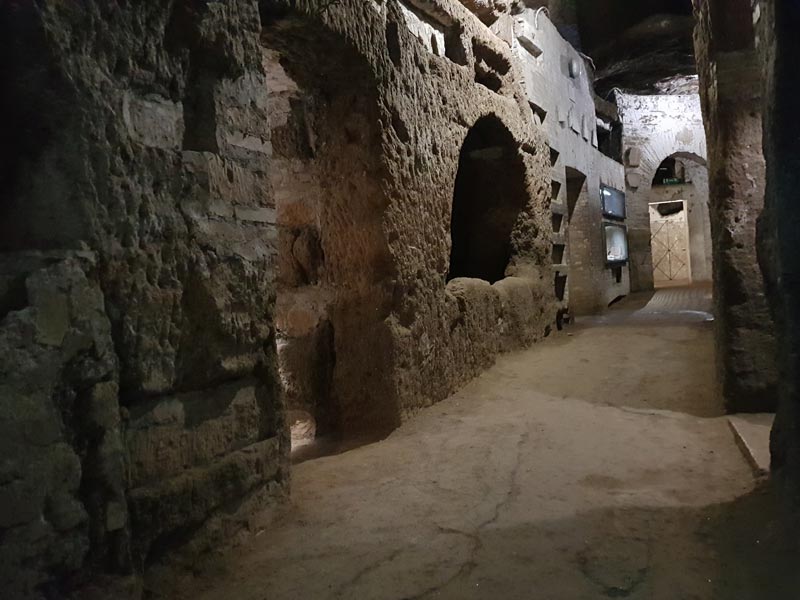
The area of Pope Melziades
Through an open passage in the back wall of the cubicle A1 one enters the area of St. Miltiades. This area was excavated in the second half of the third century and contains many cubicles and arcosolium, also along the galleries.
The first gallery that can be visited is spacious. It was continually used in the periods of visits to the tombs of the martyrs, because it constituted the obligatory passage of the ancient pilgrims from the crypt of the Popes and of St. Cecilia to the sepulchre of Pope Martyr St. Cornelius in the crypts of Lucina.
On the left wall, at the beginning of the gallery, some symbols are visible: The dove, two monograms, the fish, a bird that goes to quench their thirst in a vase. On the corner of the first gallery on the left there are two tombstones of "Julianus presbyter" and "presbyter in pace" (Julian the Priest and Priest in Peace).
Immediately after an intersection of tunnels with a large skylight, on the upper right you can see the impressive tombstone of the phoenix with rays and a halo around the head. Speaking of symbols, for the early Christians the phoenix represented the resurrection of the flesh and the birth to the new divine life.
Let us now observe the first arcosolium, sometimes, as in this case, decorated. Above the arcosolium there is the small tombstone of Irene, a Christian girl represented as prayerful in heavenly peace.
Beside it is the symbol par excellence of peace: the dove.
A little further on, on the left, there is the crypt of refrigerium, which served for prayer meetings and for the rites of refreshment, that is, the annual commemoration of the dead. In it there is the cover of a monumental sarcophagus. Because of the shape of the tiled roof, called "coppi", the crypt was called at the time of de Rossi the crypt of coppo. Opposite is the Cubicle of the four seasons, which symbolizes the continuity of life.






